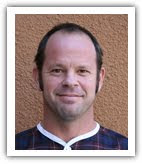
Thursday, May 28, 2009
Subscribe to:
Post Comments (Atom)
Mathematics making sense.

Hi Mr. Black,
Great news! Part I of student x final came back with 89% ! That is truly awesome! Thanks to you!
... My husband and I are eternally grateful for your intellect, and your way of connecting with pupils. You've done more than help student x through the last few weeks of Geometry. I believe our son has begun to feel hopeful too-- that his road is not so lonely having someone strong in his corner.
=+=+=+=+
Dear Mr. Black, I have been meaning to tell you how impressed I am with how you have taught math skills to the class. I hear from the kids that they really like you and that you make learning math fun, but the other night was truly awe inspiring. In preparation for her test, my daughter handed me her math book and told me to open it to any problem in Lessons 1 - 115. She suggested odd numbers so I could see the answers. I would open the book randomly and give her a problem. She answered every single one of them. It was amazing. This was a wonderful example of students truly learning rather than being taught to the test. Thank you for all of your efforts this past year. My daughter will miss being in your class next year.
=+=+=+=+=+
Dear Mr. Black,
Our son placed in the top 3% of the state for his score on the math portion of the SAT. Thank you!
Nothing is more satisfying than being a teacher. Seeing my students grow in maturity, intelligence, and depth of understanding—and consequently seeing my community benefit from the addition of thoughtful, responsible, educated young adults—gives me profound satisfaction.
For many, math is regarded as intimidating, tedious, a chore. It is my goal to help free our community of people who say, “I hate math.” I have the pleasure of teaching students at every stage of development, from simple arithmetic to algebra to geometry to pre-calculus. It is my goal to ensure that at each step in the progression they have not just learned but mastered the concepts, and that they can advance with confidence and clarity.
When I teach my students long division, they do not simply churn through an algorithm. Long division is a step in a mathematical sequence, from counting (which is addition), to multiplication (which is repeated addition), to subtraction (which is addition of negative numbers), to division (which is keeping track of repeated subtraction). The students do not view long division as a process that exists in a mathematical void; they see its connection back to addition. Their depth of understanding allows them to grasp later concepts such as the division of polynomials and the reason behind the order of operations. This approach is one example of a broader theme: I am satisfied only when my students truly understand.
The task is a creative one. It cannot be achieved by cranking students through some preconceived program at some predetermined pace. I enjoy the responsibility of finding creative ways to break through mental barriers to learning, of challenging students at their own levels ability, and of making them feel recognized and appreciated as unique individuals.
When one brilliant 5-year-old proved himself a prodigy in geography and zoology but formed an early aversion to mathematics, I taught him, for example, hexagons by reference to a bee’s honeycomb and addition through summing the number of countries in the world. When presented a 6-year-old with a seemingly infinite capacity and appetite for math, I nourished his ability, marveled as I witnessed him grasp the connection between fractions, division, and decimals (a year-long curriculum for most) in the span of about a single class period, and was pained at the thought of how many such students must exist, neglected. When after repeatedly asking the kids to put on their “thinking caps,” I brought in my own hand-sewn, colorful, patterned cap to give playful emphasis to the point, and was greeted by cries of, “I want one!”—I indulged. Being able to adapt, creatively and compassionately, to the individual child is one of the greatest pleasures of teaching.
Helping the child to build a solid conceptual structure and recognizing him as an individual, I empower the child to believe in himself. I am in a position to help provide students with a solid understanding of math, a generalized feeling of competency, and the sense that they have an important place in this world. What could be more satisfying?
No comments:
Post a Comment